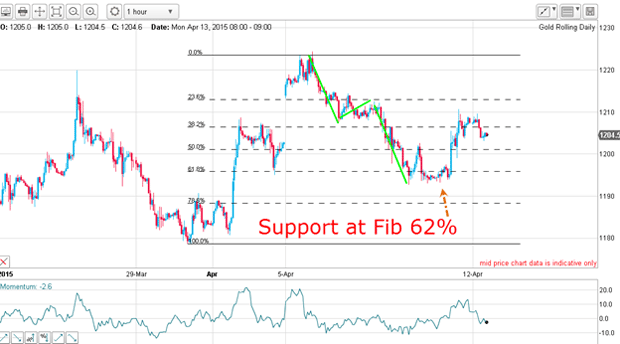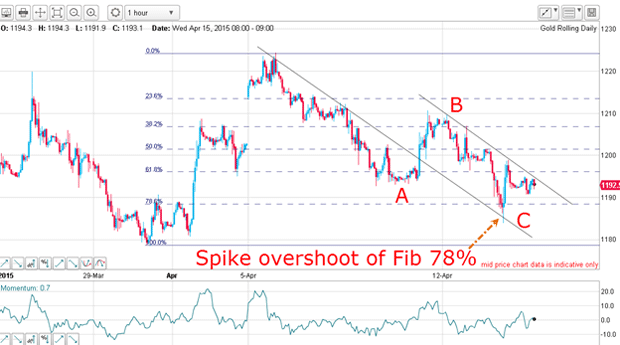Perfect methods mean nothing if you don’t keep a cool head
John C Burford explains why understanding you own emotional responses to the market is fundamental to your trading success.
I'm continuing my coverage of the gold market today, because it is a shining example of what you can do to limit loss on a trade that goes wrong at least temporarily. The gold market also shows how critical the right emotional attitude can be to your trading success.
In Monday's post, I emphasised that the golden rule for traders is to preserve capital as tightly as possible. To accomplish this, I advocate using my break-even rule.
A trade is never more vulnerable than it is just after it begins. You have your stop-loss in place, but if the market does not move in your direction far enough to use the break-even rule, then you are exposed to the maximum loss to your stop (which you have previously worked out using my 3% rule, of course).
MoneyWeek
Subscribe to MoneyWeek today and get your first six magazine issues absolutely FREE

Sign up to Money Morning
Don't miss the latest investment and personal finances news, market analysis, plus money-saving tips with our free twice-daily newsletter
Don't miss the latest investment and personal finances news, market analysis, plus money-saving tips with our free twice-daily newsletter
On Monday, I had a long trade at $1,196 with my protective stop at $1,192 for a tiny $4 risk. As I pointed out, this is an unusually small risk in gold this market can jump by $4 in seconds!
The market had rallied off the Fibonacci 62% support and was looking very good for me. In fact, the market rallied to the $1,210 level $14 above my entry.

Compared with my initial risk of $4, this rally would allow me to move my stop to break even, because the ratio of maximum gain to risk was 3.5 to 1.
Even though the market was following my roadmap perfectly, there was no guarantee that it would continue to do so. Forecasts are never 100% certain and the wise trader will always allow for the possibility that the market will veer off the road at the next bend.
All we can do is to assess the probabilities of various options in real time based on methods that have worked in the past. If we can find just a few big winners every quarter and keep the losses on our losers as small as possible, we will have a winning strategy.
Crucially, there is no way to tell if a particular setup will turn out to be one of those big winners in advance. When you do have a budding big winner, you simply have to go with the flow.
Controlling your emotion is just as important as your methods
You see, this is one of the many emotional decisions that a trader must grapple with and there are plenty of others!
Actually, the emotional aspect of trading gets little attention compared with the screeds of material out there on methods, systems and indicators. But I maintain that understanding you own emotional responses is fundamental to your trading success.
If you give up on gold here in disgust, you may miss out on a really big potential gain I've explained why in previous posts. If you see gold sailing away without you, you will kick yourself at missing out. You were right, after all but with nothing to show for it. That hurts.
But if you remain dogged in your pursuit of this market, you may feel aggrieved by your loss and desperately want to make it back, pronto. This is your ego speaking, and this aggression will likely lead you into impulsive and losing trades.
Staying focused in a trade can be the difference between a big profit and a missed opportunity. But the latest dip has not negated my bigger picture. After taking out my $1,192 stop, the market crashed yesterday to a spike low of $1,184 and overshot the Fibonacci 78% support level. But that set up a likely A-B-C, which is a corrective pattern. If this is correct, I can expect a resumption of the rally.

I now have a decent tramline pair working and the fog is clearing. The market is currently testing my upper tramline and a break-up through that will help confirm my A-B-C labels and herald a move up.
But if the tramline holds, the market may well test the C wave low and a break of that would very likely mean that my case for a big rally must be put on hold.
With no open position, and using my tramline method in a disciplined way, the path is clear for my next trade. I just have to wait to see how the market interacts with my tramlines.
Get the latest financial news, insights and expert analysis from our award-winning MoneyWeek team, to help you understand what really matters when it comes to your finances.
John is is a British-born lapsed PhD physicist, who previously worked for Nasa on the Mars exploration team. He is a former commodity trading advisor with the US Commodities Futures Trading Commission, and worked in a boutique futures house in California in the 1980s.
He was a partner in one of the first futures newsletter advisory services, based in Washington DC, specialising in pork bellies and currencies. John is primarily a chart-reading trader, having cut his trading teeth in the days before PCs.
As well as his work in the financial world, he has launched, run and sold several 'real' businesses producing 'real' products.
-
 What are my retirement income options?
What are my retirement income options?We’re all told to save into a pension, but there’s widespread confusion about how to take an income from our savings and investments at retirement, a new study has found. We look at your retirement income options.
-
 UK interest rates: will the Bank of England lower rates?
UK interest rates: will the Bank of England lower rates?The Bank of England’s Monetary Policy Committee’s (MPC) final interest rates meeting of the year takes place tomorrow (18 December) and most experts expect a cut